I’m writing to show you my cottage garden pond and how I’ve been fiddling about with it lately. A small pond is a lovely thing to have in any garden and there’s advice about them everywhere.
We have had frogs and frogspawn in the past but sadly I’ve seen none now for years. I’m hoping the revamp will encourage wildlife to return. You can see how it looked in 2018 here
I emptied the pond in February
by stabbing a few holes in the liner to let the water drain out and then digging the hole a bit deeper in the middle. It’s still only around 30cms deep.
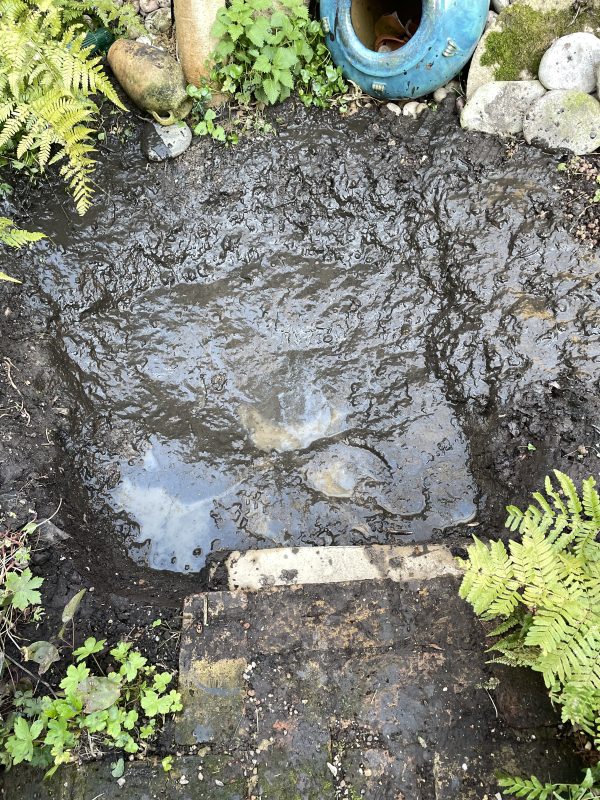
A little deeper in the middle
I relined it and filled it with old pond water and lots of rain water I’d collected.
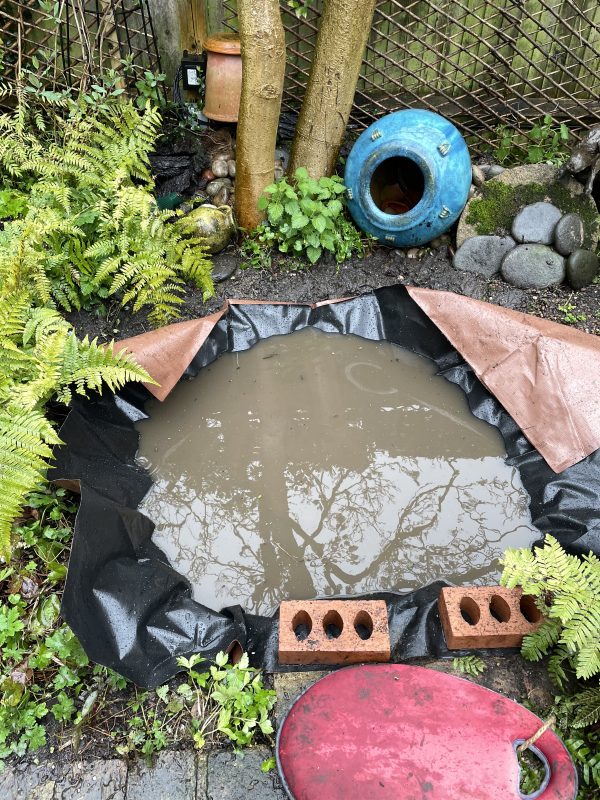
New pond liner and old pond water
I put stones all around it and thought it looked rather fab.
However a pond expert
politely suggested this wasn’t a good idea as the stone edges were a barrier to creatures getting in and out. They look nice but are not as natural and as wildlife friendly as planting would be. I could understand that so I took away most stones and now you can see the edge of the liner sticking up. Stones in the pond are fine and provide hiding places for creatures as well as different levels in the water.
There also seems to be someone on frog watch.

looking good
I’ve decided to plant around the edge to cover the lining so there will be a green seamless circle round the pond.
Planting
I’ve planted ferns, astrantias and epimediums to start with.

Ferns as edging
I found two newts in the sludge so fingers crossed.
At first the water was lovely and clear until the sun came out and then it turned into pea soup.
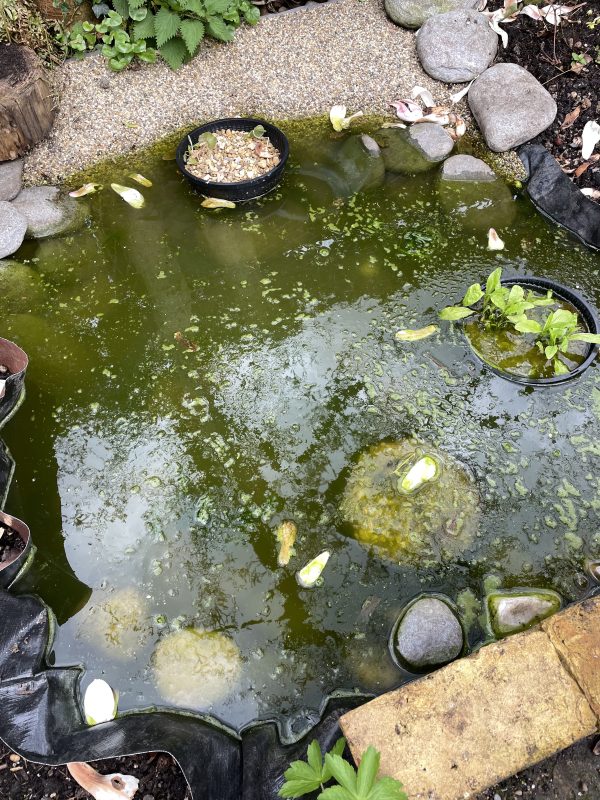
Sunlight turns the water into pea soup
That was solved by throwing in a straw bundle from the garden centre and some oxygenating plants from Amazon. I also bought pond plants from www.lincspplants.co.uk It has taken a week for the water to turn from green to a natural murky brown.

Pond water slowly clearing
As days pass the pond becomes clearer so I can now see through the water .

Stones piled up in the corner for creatures to climb in and out
How it looks today
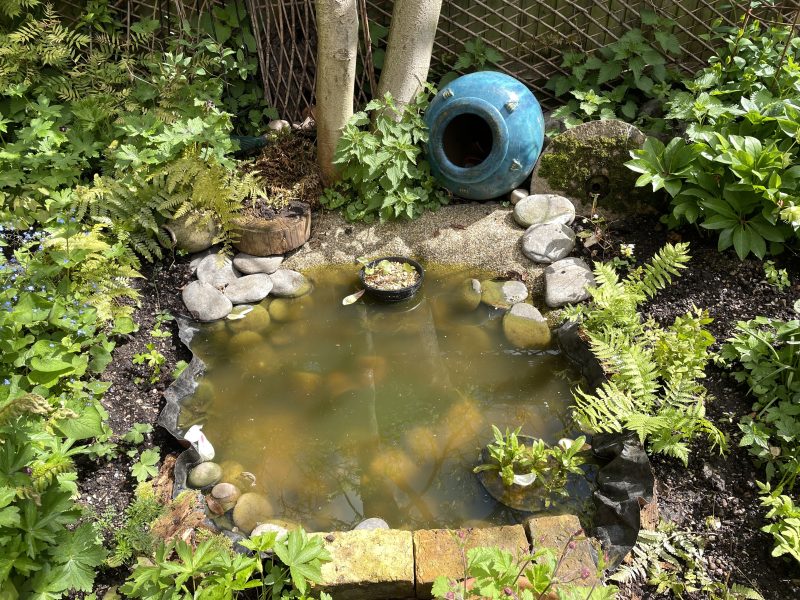
I’m very happy with it and will give it time for the planting to cover the liner edge.
Thanks for reading and have a lovely Spring. Leave your email above if you would like to subscribe to my blog, usually about one a month.
And lastly, exciting news
There is a lovely article and super photos of my garden in the May edition of Garden Answers magazine

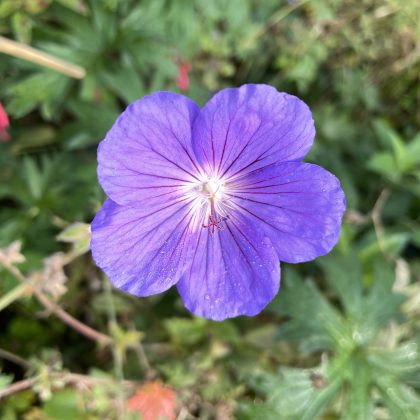
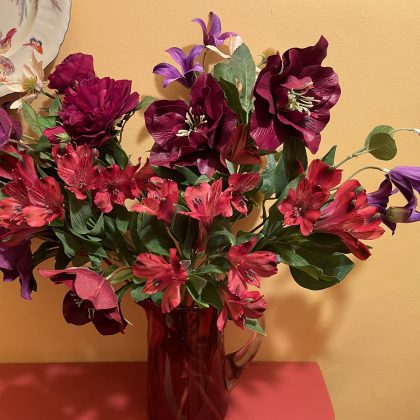
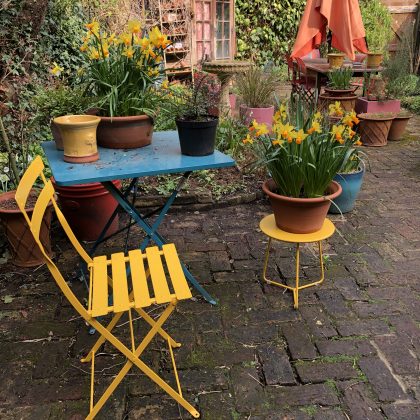
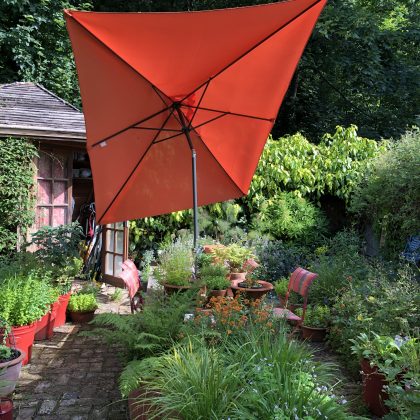
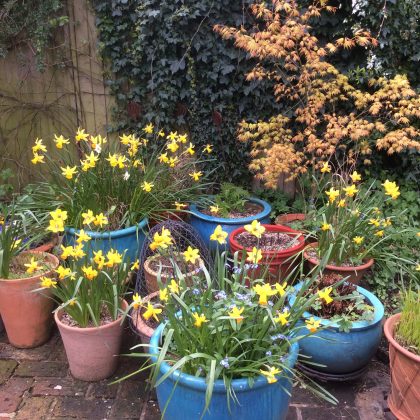

It will continue to be an area of great interest in the garden – for the gardener and the many creatures which visit.
Yes I’m sure it will. Thanks so much for commenting.
Looks great Julie 😊
Thankyou Lorna, thanks for commenting. Best wishes, Julie
Oh I do hope the frogs return to this lovely new home! I’ve had toads in our garden for years but not seen any signs yet this year.
Me too. I squint at the water every day looking for life. Interestingly the water clears more and more with the days and with the oxygenating plants I put in I guess. Thankyou so much for your comment and fingers crossed for us both. Julie.
Hi Julie,
Lots of creatures will benefit from your pond, looks fantastic.
We have two small wildlife ponds here in Stanmore, haven’t seen amphibians yet,been in, a couple of years.
Unfortunately I think it’s the cats 🙁.
Oh Thankyou so much. I too have cats but the pond expert I follow on SM has cats too and he has hundreds of newts and frogs. I’m quite envious. We can only hope but anyway, a pond is a lovely addition in a garden isn’t it even if it’s not teeming with frogs. Best wishes and thanks for your comment. Julie.
Thanks for showing that a water feature doesn’t have to take up much space. Also, the difference between just lining a hole and filling it with water, and adding oxygenating plants, rocks, and a bit of landscaping is amazing. You did a stellar job refurbishing your pond and I’m sure the local small wildlife will appreciate it.
Thankyou so much for such an encouraging comment – the pond is getting clearer every day with the plants in it so no more pea soup. It’s looking great and I add bits of rotten wood around the edges when I can find it. Very best wishes and thank you for commenting.
This is looking really good, I am sure you have had lots of wildlife appearing already! 20mm shingle is good to use at the edges of ponds, especially if you mix it with alpine compost or clay subsoil and plant with marginals. It is quite cheap (usually sold for making concrete) has enough weight to hold down a liner and can be crossed by frogs and newts. You can mix the larger cobbles in too, try to form gentle slopes. Inspect bags before purchase if possible, look for bags with nice rounded pebbles and few broken sharp pieces.
Thankyou Andy that’s lots of good ideas which I really like. thankyou so much for commenting. Julie